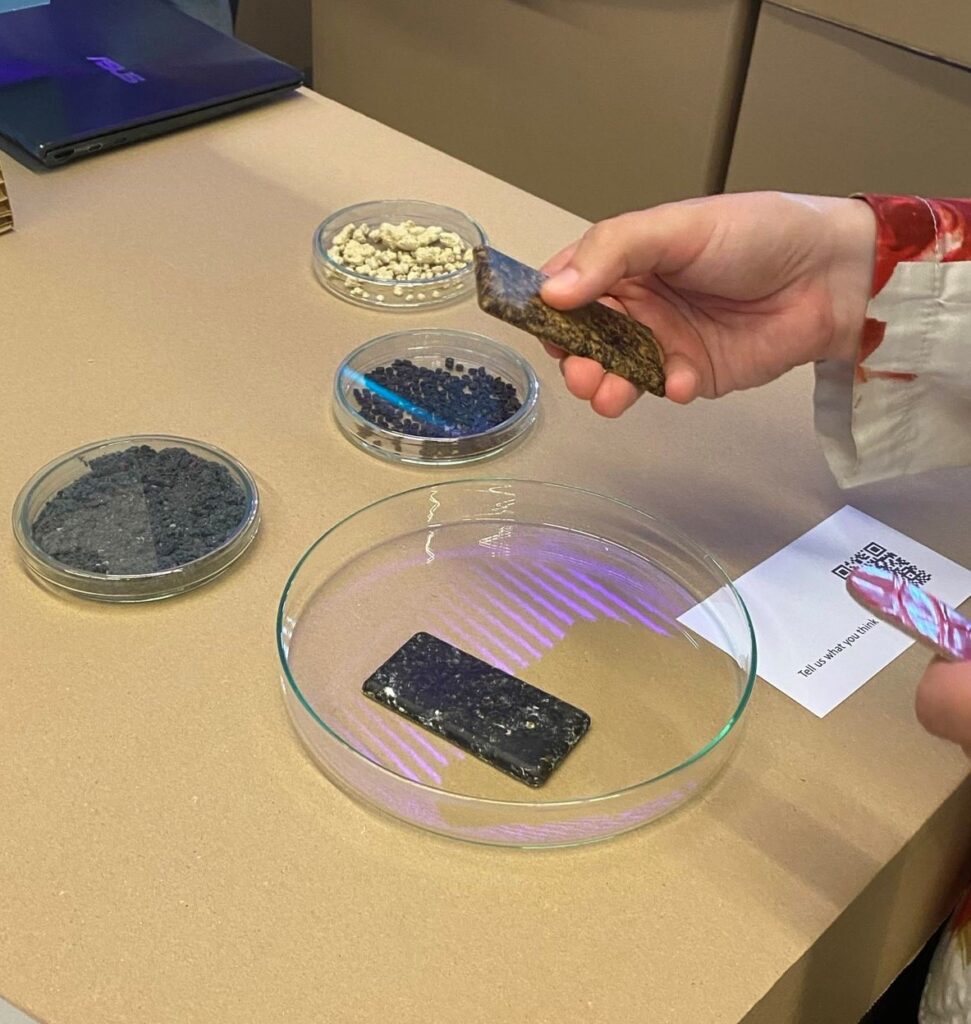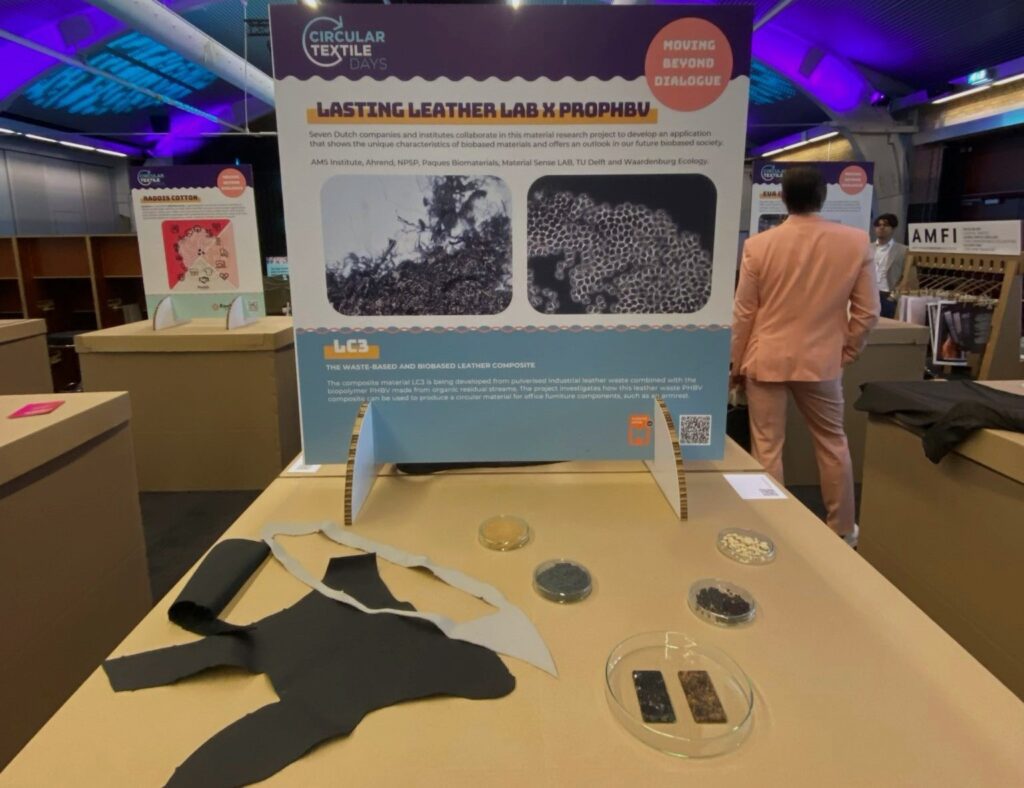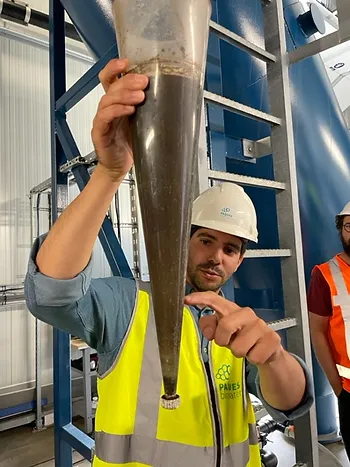PRO-PHBV: an outlook in our future biobased society.
Within the PRO-PHBV project, we are developing two applications that show the unique characteristics of biobased materials and offer an outlook in our future biobased society. The first application is a waste-based and biobased leather composite, and the second is a biodegradable nature restoration structure.

1. Waste-based and biobased leather composite
The leather industry processes leather into various end products. Over 40% of waste is generated from approximately 30,000 hides a day during processing. This is a severe waste and an opportunity for biomaterials in the near future.
In this project, industrial residual leather derived from the cutting and processing is combined with a biopolymer (PHBV) made from organic residual streams to create a leather waste -PHBV composite, which can be used to produce an armrest for an office chair.
Currently, NPSP and AMS Institute are testing small leather waste and biopolymer composite prototypes in different circumstances and environments. Different temperatures, pressures, primer treatments, and leather wastes, like shavings and pulp, have been tested, providing the information and data needed to make the right material for the application. This information is also helpful for the life cycle assessment to confirm the environmental impact of this new material. Material Sense LAB is performing the life cycle assessments within this project.
Besides the processing specifications and the environmental impact, it’s also important to research the user needs. What feels comfortable, and how do people experience the fact that it’s made from waste? Pro-PHBV is determined to make the waste-based and biobased leather composite a success and a multidisciplinary approach is the way to do that.

2. Biodegradable nature restoration structure
The second application within the PROPHBV project is the nature restoration underwater structure made from pressed PHBV-rich biomass. Ecological restoration aims to recreate, initiate, or accelerate the recovery of an ecosystem that has been disturbed. With a biodegradable underwater restoration structure, we want to help recover the underwater ecosystem without leaving harmful microplastics behind. In 2023, material samples of the PHBV-rich biomass were placed in the water of the Marineterrein to test for speed of biodegradability.

Project partners
The PRO-PHBV project involves collaboration between AMS Institute, TU Delft, Paques Biomaterials, NPSP, Bureau Waardenburg, Material Sense LAB, and Ahrend.
